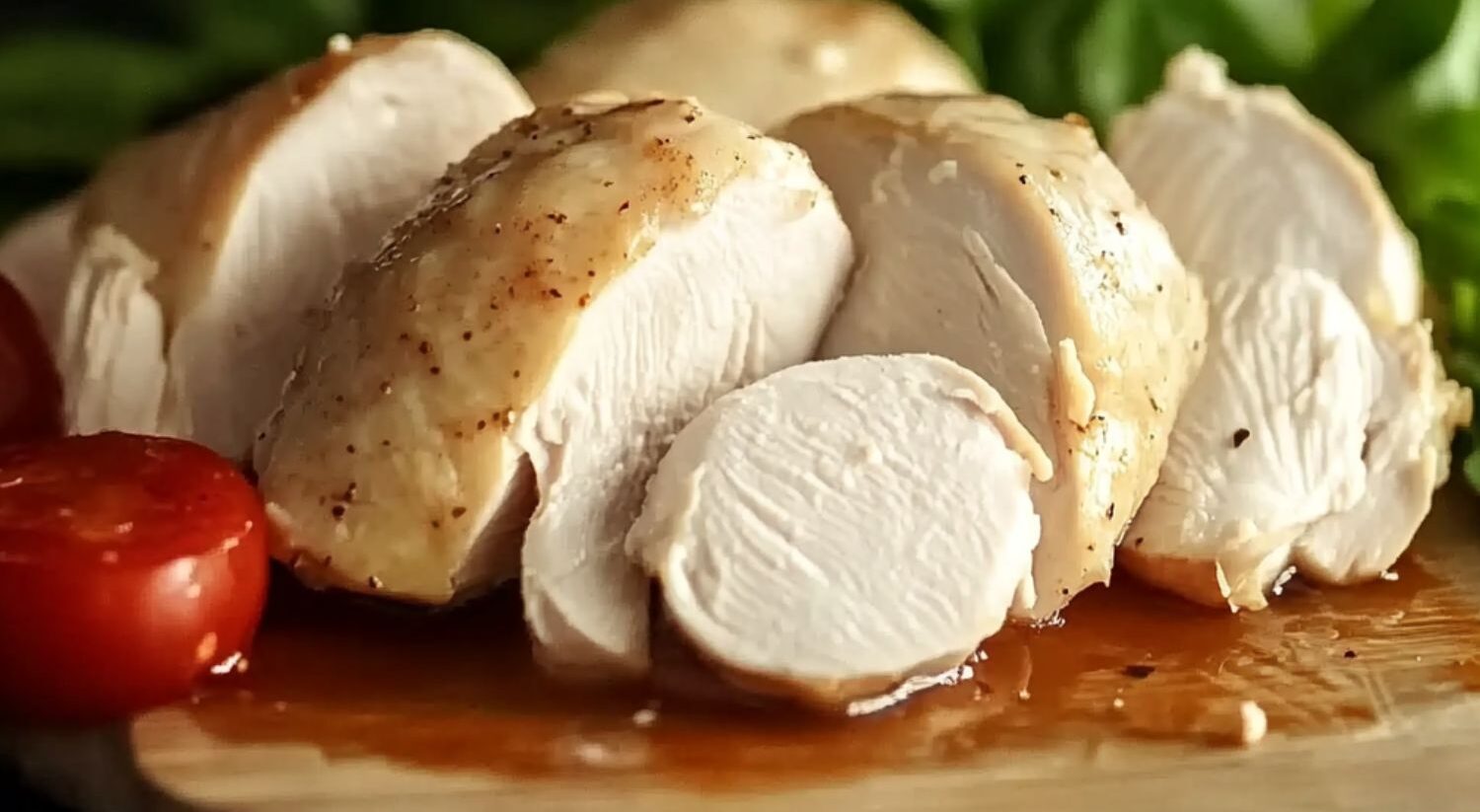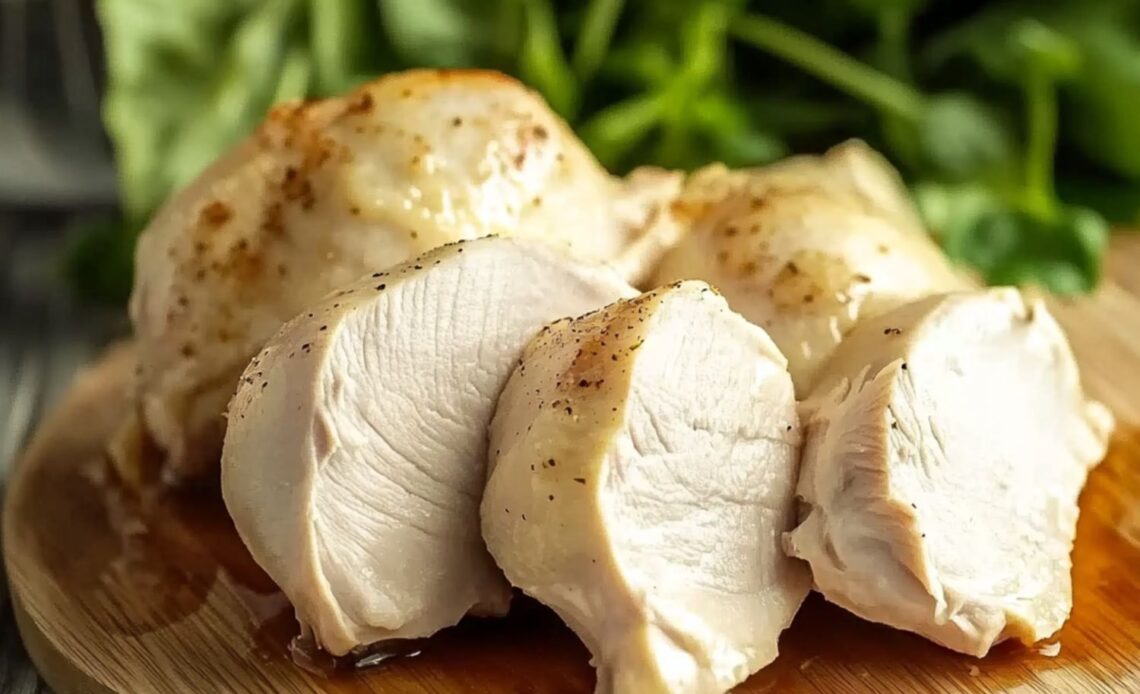
Learning how to boil chicken is an essential skill every home cook should have in their arsenal. This simple technique results in juicy, tender chicken that can be used in a variety of dishes. Whether you need shredded chicken for tacos, slices for salads, or moist meat for soups and stews, boiling chicken ensures you get the best results without any fuss.
Boiling chicken doesn’t just save you money on store-bought pre-cooked options—it also offers a rich, flavorful broth that can be repurposed in other recipes. The process is incredibly versatile and works well for quick dinners, meal prepping, or creating a base for delicious homemade soups. With a few basic ingredients and simple steps, you’ll soon have a flavorful chicken ready to elevate your meals.
So, let’s get into the details and discover how this easy yet effective method can transform your cooking. Whether you’re new to the kitchen or an experienced cook, mastering the art of boiling chicken will unlock new possibilities in your culinary journey.
Why You’ll Love This Recipe
When you boil chicken, you’re not just cooking—you’re creating a versatile and budget-friendly staple for your kitchen. Here’s why this method should become part of your regular routine:
- Moist and Tender Meat – Boiling gently retains the chicken’s natural moisture, ensuring tender and juicy results every time.
- Flavor Infusion – Seasoning the water with herbs and spices allows the flavors to infuse the chicken, making it tastier than traditional cooking methods.
- Budget-Friendly – A cost-effective way to prepare chicken without compromising on flavor or quality.
- Versatile – Perfect for shredding, slicing, or dicing to use in a wide range of dishes.
- Convenient and Quick – Ideal for meal prepping or making quick weeknight dinners.
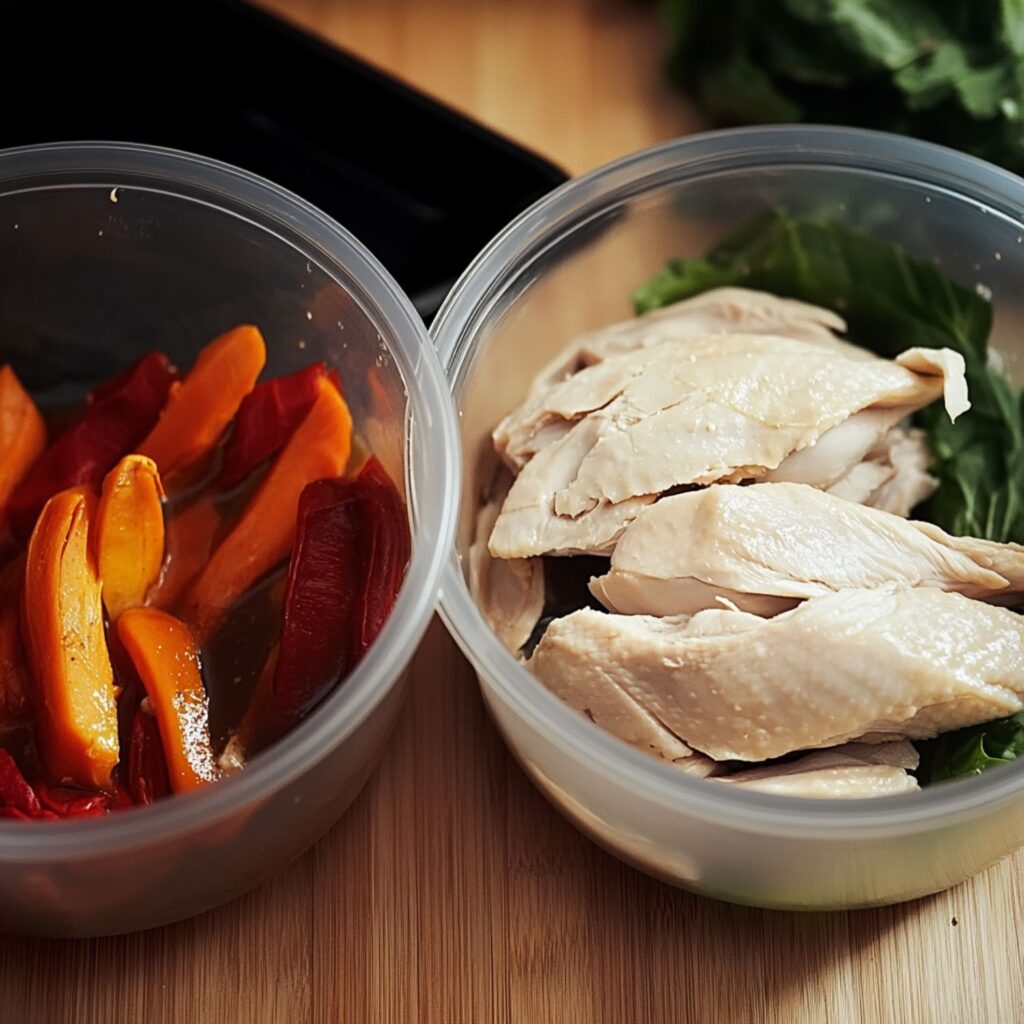
Ingredients Overview
This simple yet flavorful recipe requires just a few basic ingredients:
- 1 to 4 boneless, skinless chicken breasts (approximately 12 ounces each)
- 1 teaspoon salt
Optional seasonings:
- Smashed garlic cloves
- Bay leaves
- Peppercorns
- Sliced ginger
- Sliced lemons or oranges
- Sliced onions or celery
- Fresh rosemary
- Fresh thyme
These seasonings are optional but add depth to the flavor and enhance the natural taste of the chicken.
How to Make Boil Chicken
Step 1: Place the Chicken in the Pan
Arrange the chicken breasts in a large pan, laying them in a single layer at the bottom. Don’t worry if they overlap slightly—just ensure they’re evenly spaced for uniform cooking.
Step 2: Cover with Water and Add Salt & Seasonings
Pour enough water to just cover the chicken, then add 1 teaspoon of salt. For added flavor, toss in your preferred seasonings. You could go for classic garlic and bay leaves, or experiment with lemon and ginger for a zesty twist. The seasonings will infuse the chicken and create a delicious broth.
Step 3: Bring the Water to a Boil
Set your stove to medium-high heat and bring the water to a boil. As the water heats up, foam may form on the surface—skim it off if you plan to use the broth, or leave it if you’re only using the chicken. This initial boil helps bring the chicken to a high temperature quickly, ensuring it cooks evenly.
Step 4: Cover and Simmer the Chicken
Once the water boils, reduce the heat to low and cover the pan with a lid. Let the chicken simmer gently. Thin cutlets will take about 8 minutes, larger breasts around 15 minutes, and bone-in chicken breasts can take up to 20 minutes. Keep the heat low to avoid boiling aggressively, which could dry out the chicken.
Step 5: Check the Chicken for Doneness
To check if your chicken is cooked, use an instant-read thermometer. The internal temperature should read 165°F (74°C). Alternatively, cut into the chicken; it should be firm and white throughout with no pink areas. Avoid overcooking to ensure the meat stays tender.
Step 6: Cool, Shred, or Slice the Chicken
Remove the chicken from the broth and let it cool slightly before shredding or slicing it. Use your chicken in a variety of dishes like tacos, salads, soups, casseroles, or sandwiches.
Step 7: Store and Freeze Boiled Chicken
Let any leftover chicken cool completely before storing it in an airtight container. It will last in the fridge for up to 5 days. For longer storage, freeze shredded or sliced portions for up to 3 months. Don’t forget about the flavorful broth—it can be used in soups, rice, or even sipped on its own!
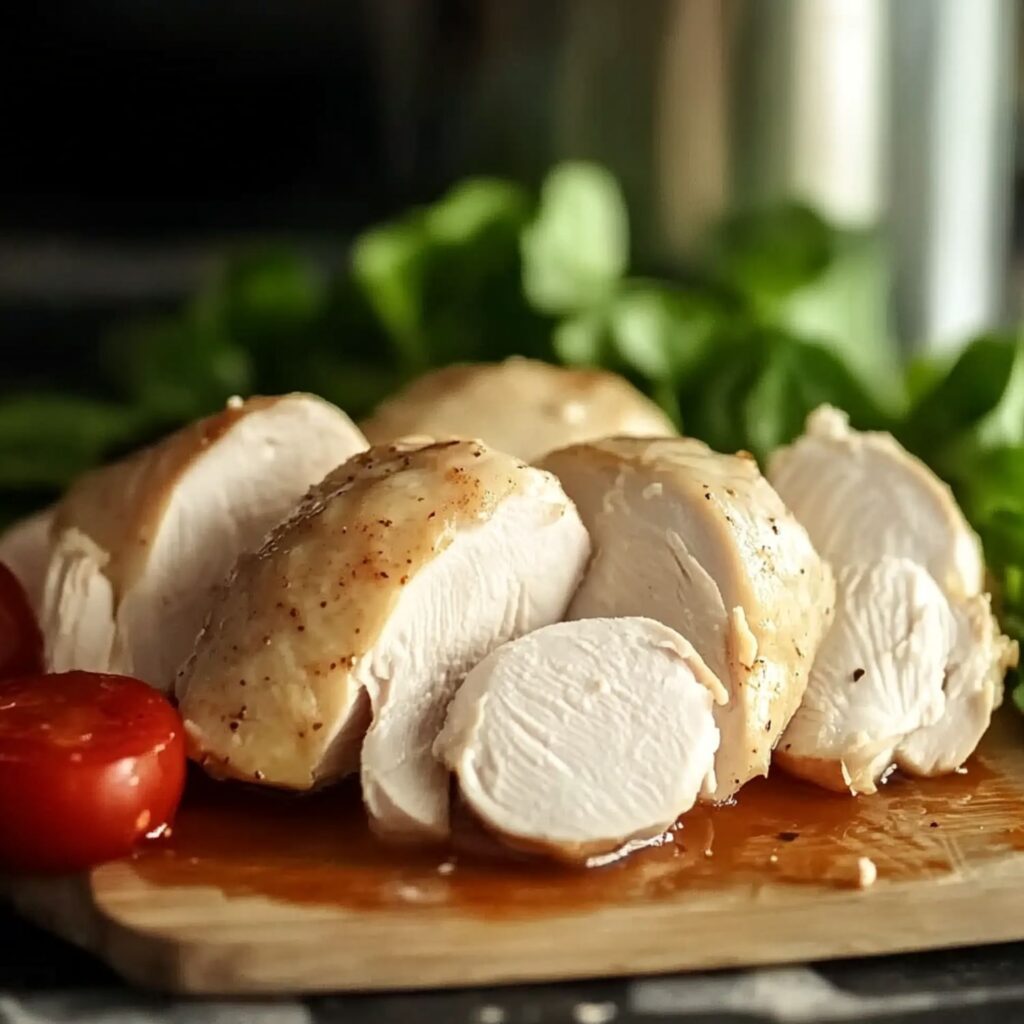
Tips for the Best Boiled Chicken
- Layer Everything Evenly: Ensure your chicken is in a single layer to guarantee uniform cooking.
- Experiment with Seasonings: Customize your broth with garlic, herbs, or citrus to create unique flavors.
- Monitor Temperature: Keep an eye on the chicken’s internal temperature to prevent overcooking.
- Reuse the Broth: The leftover broth is full of flavor and can be used in soups, risottos, and sauces.
Frequently Asked Questions (FAQs)
Q: Can I use frozen chicken breasts?
A: Yes! You can boil frozen chicken, but be prepared to add about 20 minutes to the cooking time, depending on the size.
Q: Is boiling chicken the same as poaching?
A: Poaching involves gently simmering chicken in liquid at a low temperature, while boiling initially brings the liquid to a high boil. This method combines both for the best results.
Q: How do I prevent the chicken from becoming dry?
A: Boiling briefly and simmering gently ensures the chicken stays moist. Adding seasonings to the broth also helps retain moisture and flavor.
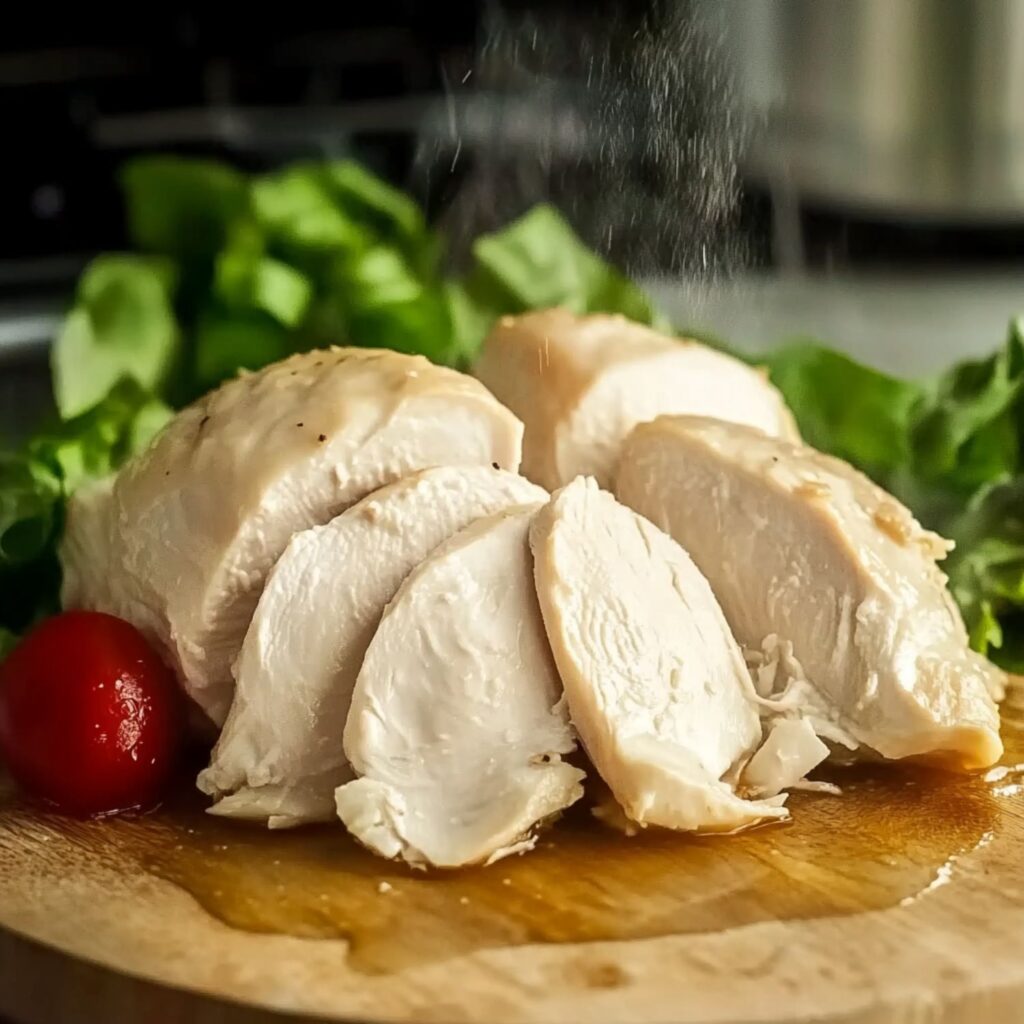
How to Store and Reheat Boiled Chicken
- Refrigeration: Store cooked chicken in an airtight container in the fridge for up to 5 days.
- Freezing: For longer storage, freeze shredded or sliced portions for up to 3 months.
- Reheating: Reheat gently in a pan over low heat, or microwave with a little broth to retain moisture.
Conclusion
Boiling chicken is a quick, easy, and cost-effective way to get tender, flavorful meat for all kinds of recipes. Whether you’re making salads, tacos, soups, or casseroles, this method is incredibly versatile and offers delicious results every time. Plus, the leftover broth adds extra flavor to your kitchen creations, making this method even more valuable.
We hope you enjoy this simple cooking technique and that it helps you prepare healthier, budget-friendly meals at home. Don’t forget to follow us on Pinterest for more delicious recipes and cooking tips!


